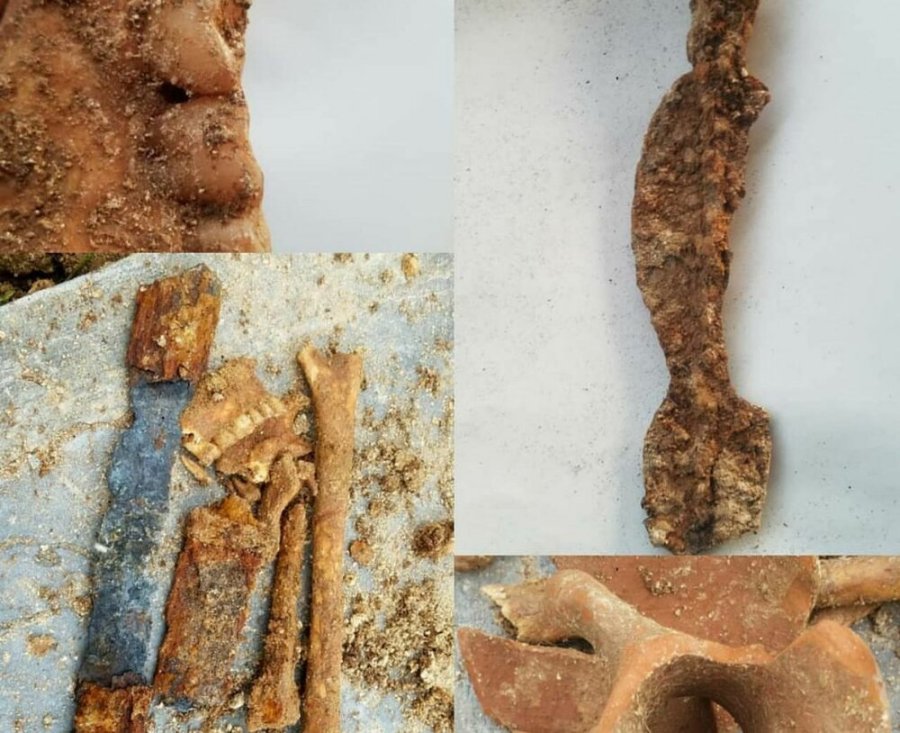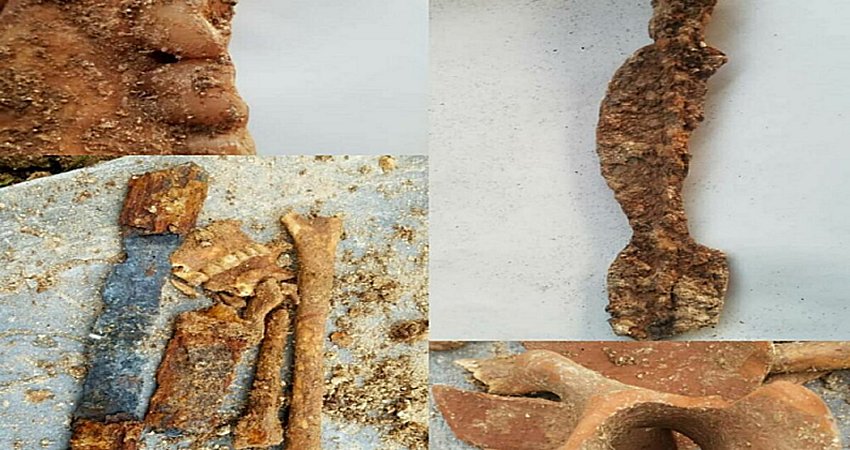Conny Waters – MessageToEagle.com – An accidental discovery of an ancient tomb chamber has recently been made in a graveyard near Sari, northern Iran, as an excavator was digging down quite deep to entomb a coronavirus victim.
The ancient grave includes remains of a human skeleton, an iron dagger, vestiges of a pottery vessel, a quiver, personal ornamentations, and a piece of an iron object, which is believed to be [piece of] weaponry, according to archaeologists.

“Considering the type of construction of the dagger and a three-sided arrow found in the grave, it seems that it belongs to the Parthian soldier,” reports Tehran Times.
Two years ago, a necklace and a bronze ring were discovered in the cemetery, which dates back to about 3,500 to 5,000 years ago, the report added.
The Parthian Empire, also known as the Arsacid Empire, was a major Iranian political and cultural power in ancient Iran. The Parthians largely adopted the art, architecture, religious beliefs, and royal insignia of their culturally heterogeneous empire, which encompassed Persian, Hellenistic, and regional cultures.
At its height, the empire stretched from the northern reaches of the Euphrates, in what is now central-eastern Turkey, to eastern Iran.
Parthian warfare was characterized by the extensive use of cavalry and archers. Coming at enemy troops from all directions Parthian riders created confusion and wreaked havoc.
See also: More Archaeology News
Smart with their tactics, the Parthians were also adept at psychological warfare. At the Battle of Carrhae, before the Romans approached, Surena, the Parthian general, hid the bulk of his force behind his advance guard so his army would appear small.
Then, “to confound the soul and unseat judgment” (Crassus, 23:7) the Parthians filled the plain with a deafening beat of kettledrums. Plutarch mentions these drums were covered with bronze bells.
Written by Conny Waters – MessageToEagle.com – AncientPages.com Staff Writer







